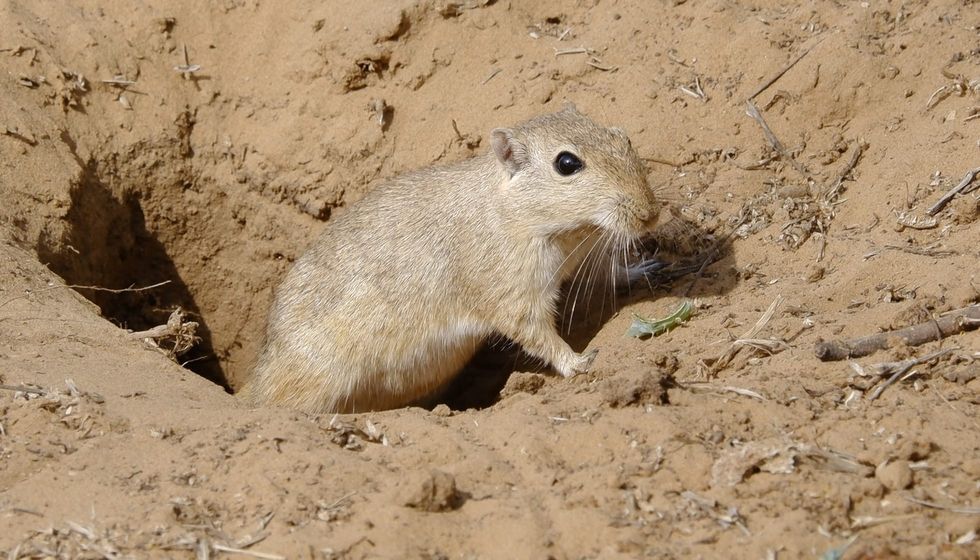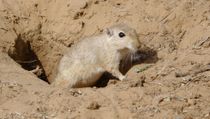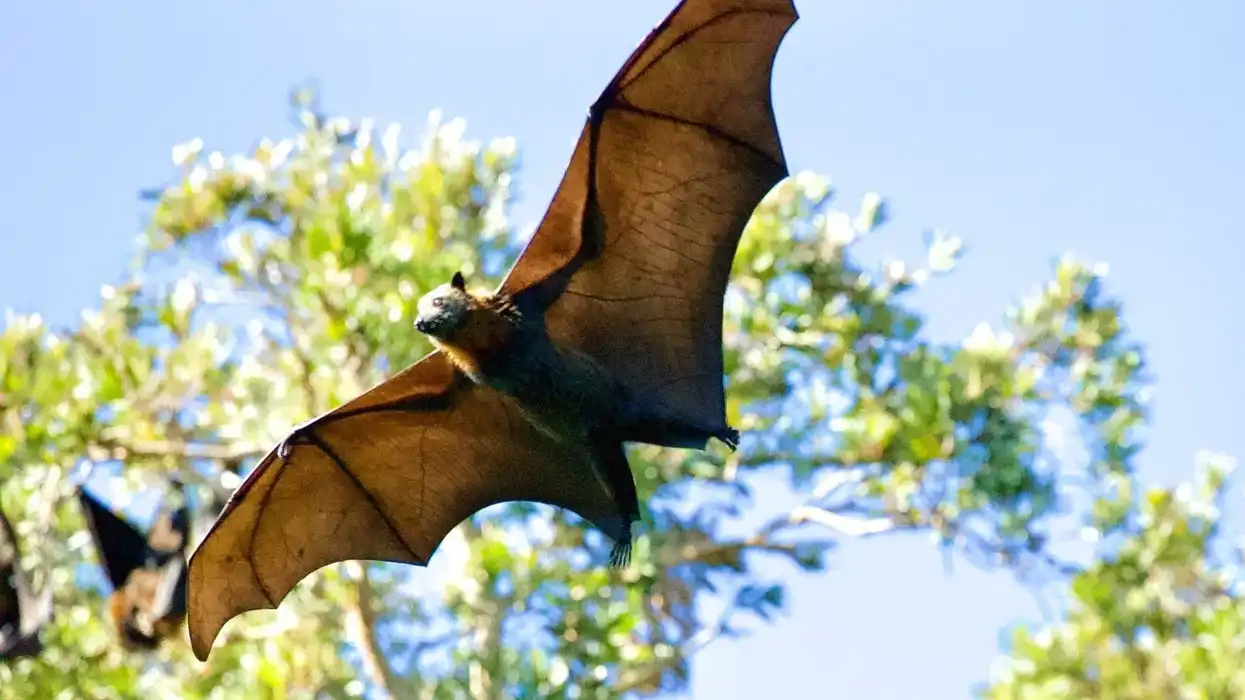The Muridae or murids are the largest family of rodents and mammals in general, made up of approximately 834-1,383 species, which is further classified into five subfamilies and divided into 150 genera, including several species of rats found naturally throughout Eurasia, Africa, and Australia.
The name Muridae is derived from the Latin word 'mus', meaning 'mouse'. This article is about a special species of Australian stick nest rat that is now unfortunately Extinct.
It will tell you everything you need to know about them including information about their distribution, range, changes in the conservation status, threats, habitat, feeding, breeding, and nesting habits!
The lesser stick-nest rat (Leporillus apicalis) is an Extinct species belonging to the family Muridae and genus Leporillus. This genus of the rodent family Muridae is endemic to Australia, and it consists of only two species, the lesser stick-nest rat (Leporillus apicalis) which is Extinct, and the greater stick-nest rat (Leporillus conditor).
The lesser stick-nest rat distribution occurred all over Australia, mainly in the central, western, and southern Australian regions.
They were often confused with the closely related greater stick-nest rat species as their distribution and range overlapped. The greater stick-nest rat, also known as the house-building rat, is a species of rodent in the family Muridae.
A single individual of the lesser stick-nest rat species was last spotted on July 18 in 1933, but in 1970 an incredible almost miraculous sighting was reported in a remote area of New South Wales. The IUCN in 2008 classified them as Critically Endangered, as many suspected that a few might still be alive in remote areas.
However due to no proof, their conservation status was later updated to Extinct species in 2016.
These rats were first introduced and described by John Gould, an English ornithologist in 1854. The Australian lesser stick-nest rat was nocturnal, herbivorous, and highly preyed upon.
Read on to find more information about them! Learn about some other mammals from our muskrat facts and naked mole-rat facts pages.
Lesser Stick-Nest Rat Interesting Facts
What type of animal is a lesser stick-nest rat?
The lesser stick-nest rat (Leporillus apicalis) is an Extinct species of rat belonging to the Animalia kingdom.
What class of animal does a lesser stick-nest rat belong to?
The lesser stick-nest rat (Leporillus apicalis) species belongs to the Mammalia class.
How many lesser stick-nest rats are there in the world?
Unfortunately, there are no lesser stick-nests rats left in the world.
Where does a lesser stick-nest rat live?
These rats lived in areas of central Australia, South Australia, Western Australia, and New South Wales.
What is a lesser stick-nest rat's habitat?
The lesser stick-nest rat occupied arid and semi-arid lands of central Australia. As this species is Extinct, information about their ecology is limited.
Who do lesser stick-nest rat live with?
They were social animals who lived in pairs and close tight-knit packs.
How long does a lesser stick-nest rat live?
The life span of this rat is unknown, but some speculate that they lived up to two or four years in the wild.
How do they reproduce?
These rats used to breed frequently, generally producing large litters several times per year. The exact number of babies is unknown as the litter size was variable. The nests were built by both partners, with several sticks.
The nests were at least 9.8 ft (3 m) long and 3.2 ft (1 m) high. Their nets were found in warmer regions of their range, meaning they preferred warmer breeding grounds. Young rats were born blind, hairless, and helpless, and were often preyed upon by snakes and birds.
What is their conservation status?
In 2008 the IUCN status for the Australian lesser stick-nest rat was updated and downgraded from Extinct to Critically Endangered and Vulnerable to Extinct. However, the status was changed back to Extinct in 2016 as no proof about their existence was found.
Lesser Stick-Nest Rat Fun Facts
What do lesser stick-nest rats look like?
They typically had slender lean bodies with scaled pink-gray tails, that were generally shorter than the body, fairly pointed snouts with prominent gray-black whiskers, and their feet were broad, improving their climbing ability. They were mostly shades of brown, with faded black-gray and white markings. They had a small head, with rounded black eyes and pink-beige ears.

*We've been unable to source an image of less stick-nest rat species and have used an image of a Indian desert jird instead. If you are able to provide us with a royalty-free image of less stick-nest rat, we would be happy to credit you. Please contact us at hello@kidadl.com
How cute are they?
These rats looked really cute because of their small furry bodies, long whiskers, tiny black eyes, and rounded ears!
How do they communicate?
These rats communicated just like other species by emitting ultrasounds. They also used pheromones and their strong sense of smell to communicate with other members of their pack. They had sharp ears and could easily detect movements made by their predators such as cats and foxes.
How big is a lesser stick-nest rat?
Lesser stick-nest rats are small mammals, typically around 1.8-4.3 in (4.5-11 cm) in length excluding the tail.
A sun bear is nearly 20 times bigger than a lesser stick-nest rat.
How fast can a lesser stick-nest rat run?
The speed rate of this species is unknown, but they were great climbers!
How much does a lesser stick-nest rat weigh?
A lesser stick-nest rat weighed around 6.7-15.8 oz (190-450 g).
What are the male and female names of the species?
Male rats are called bucks, females who haven't given birth are called does, and pregnant or parent females are called dams. A group of rats is referred to as a mischief thanks to their spunky and energetic behavior.
What would you call a baby lesser stick-nest rat?
Young or newborn rats are called infants or pups.
What do they eat?
Australian lesser stick-nest rats are herbivorous and their diet in the wild primarily consisted of leaves, fruit, pellets, cereals, root vegetables, and other plant material. They used their forepaws to bring food items to their mouth while being seated on their haunches.
Their nests found in South Australia had trails of several food grains and leafy vegetables. The reduction in available food sources caused them to be more vulnerable to predators like barn owls.
They were also preyed upon by foxes, feral and domestic cats.
Are they dangerous?
As they are Extinct, information about the threats they posed on human life is unknown.
Would they make a good pet?
Well, keeping them as pets is impossible as they are Extinct. These rats back in the day were easily tamed, training them to climb onto tables to get sugar was a popular trend. Their flesh was also eaten by people. In fact, Gerard Krefft in 1862 wrote that these rats had white, tender, and well-tasted flesh.
Did you know...
Another scientific name given to the species is Hapalotis apicalis Gould.
The last recorded specimen was collected in 1933 near Mount Crombie in the Anangu Pitjantjajara Lands of South Australia and is now held at the South Australian Museum.
Why did the lesser stick nest rat go Extinct?
The species went Extinct for several reasons. Their nests were destroyed by predators,the increasing population took up space to develop houses, their natural habitats were lost, and last but not the least, human disturbance.
What is the most dangerous rat in the world?
The African crested rat is the most dangerous in the world, as it is poisonous and voluntarily licks deadly toxins onto its fur. Don't they sound like some kind of made-up nightmare monster rats?!
Here at Kidadl, we have carefully created lots of interesting family-friendly animal facts for everyone to discover! Learn more about some other mammals from our Rottweiler lab mix fun facts or tamandua fun facts pages.
You can even occupy yourself at home by coloring in one of our free printable lesser-stick rat coloring pages.
Main image by XiscoNL
Second image by Zeynel Cebeci
*We've been unable to source an image of a lesser stick-nest rat and have used an image of greater stick-nest rat instead as the main image. If you are able to provide us with a royalty-free image of a lesser stick-nest rat, we would be happy to credit you. Please contact us at hello@kidadl.com.










